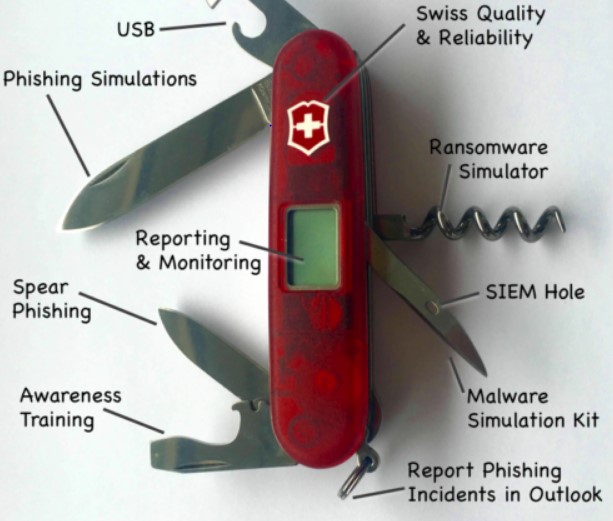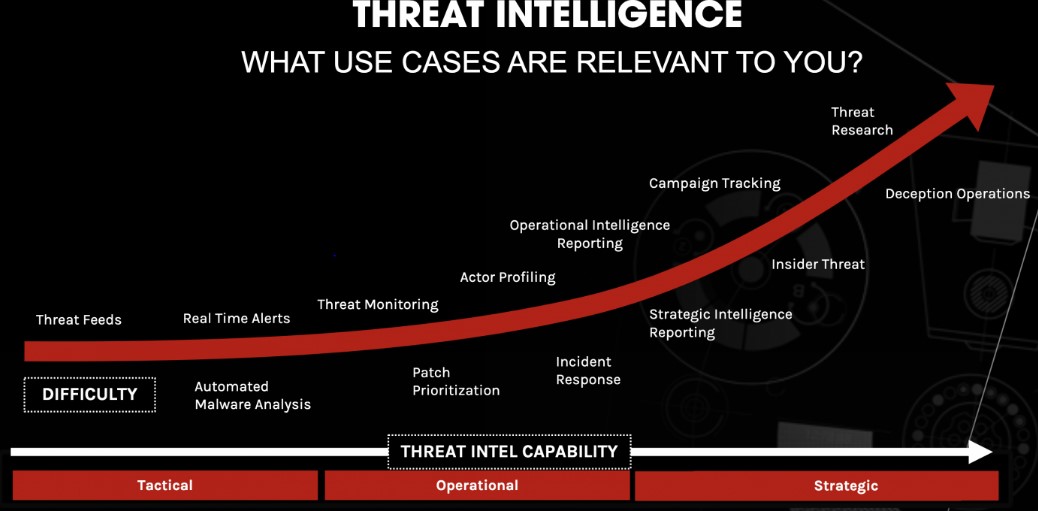The cybersecurity landscape continues to evolve rapidly, presenting new challenges for organizations worldwide. In the midst of this ever-changing environment, the Picus Red Team recently conducted an in-depth analysis of the notorious Swiss Army Knife malware.
The Picus Red Report 2023 uncovers some useful insights related to threat actors and what techniques they use.
- 7 Key Findings From The Picus Red Report 2023
- 1. Swiss Army Knife Malware: A Multi-Faceted Threat:
- 2. Stealthy Persistence Mechanisms:
- 3. Lateral Movement and Privilege Escalation:
- 4. Ransomware Capabilities:
- 5. Advanced Evasion Techniques:
- 6. Threat Intelligence Sharing:
- 7. Continuous Security Testing and Incident Response:
- How To Protect Your Business From Swiss Army Knife Malware?
- Conclusion
7 Key Findings From The Picus Red Report 2023
Here are seven key findings from the Picus Red Report 2023.
1. Swiss Army Knife Malware: A Multi-Faceted Threat:
The Picus Red Report 2023 focuses on the Swiss Army Knife malware, a versatile toolset that threat actors employ to gain unauthorized access, exfiltrate sensitive data, and perform various malicious activities. This type of malware stands out due to its extensive capabilities, which include keylogging, ransomware deployment, lateral movement, and data exfiltration. Its modular structure allows attackers to adapt and customize it based on their specific objectives, making it a formidable adversary.

2. Stealthy Persistence Mechanisms:
The Swiss Army Knife malware demonstrates advanced persistence mechanisms, enabling it to maintain a foothold within compromised systems. It employs tactics such as fileless execution, rootkit techniques, and leveraging legitimate system processes to evade detection by traditional security solutions. This emphasizes the need for organizations to adopt advanced endpoint protection and continuous monitoring strategies to detect and respond to such stealthy threats.
3. Lateral Movement and Privilege Escalation:
One of the striking features of the Swiss Army Knife malware is its ability to spread laterally across a network and escalate privileges. It leverages vulnerabilities in network protocols, weak user credentials, and unpatched systems to propagate within the organization’s infrastructure. This emphasizes the importance of implementing robust network segmentation, regular vulnerability assessments, and strong password policies to impede its progress.

4. Ransomware Capabilities:
The Picus Red Report 2023 highlights the ransomware capabilities of the Swiss Army Knife malware. Threat actors can use it to encrypt critical data, disrupting business operations and demanding hefty ransoms. To counter this threat, organizations should prioritize proactive backup strategies, disaster recovery plans, and user awareness training to minimize the impact of a potential ransomware attack.
5. Advanced Evasion Techniques:
The Swiss Army Knife malware employs sophisticated techniques to bypass traditional security measures, including signature-based antivirus and intrusion detection systems. It can modify its own code, encrypt payloads, and masquerade as legitimate processes or files, rendering detection and analysis challenging. Deploying a layered defense approach, including next-generation antivirus solutions, network traffic monitoring, and behavior-based analytics, is crucial to detect and mitigate such evasive threats.
6. Threat Intelligence Sharing:
The Picus Red Report 2023 emphasizes the importance of sharing threat intelligence across organizations and industry sectors. Collaborative efforts allow for the timely exchange of information about emerging threats like the Swiss Army Knife malware. By sharing indicators of compromise (IOCs), attack patterns, and attack techniques, organizations can collectively strengthen their defenses and respond more effectively to evolving cyber threats.

7. Continuous Security Testing and Incident Response:
To effectively defend against sophisticated threats like the Swiss Army Knife malware, organizations must prioritize continuous security testing and incident response readiness. Regular red teaming exercises, penetration testing, and vulnerability assessments can help identify and address security gaps before adversaries exploit them. Establishing an efficient incident response plan, including clear roles and responsibilities, can minimize the impact of a potential breach and facilitate timely remediation.
How To Protect Your Business From Swiss Army Knife Malware?
The Picus Red Report 2023 serves as a wake-up call for organizations to reevaluate their security postures and enhance their defenses against advanced threats like the Swiss Army Knife malware. By understanding the key takeaways from this report, organizations can better prepare themselves to counter this multifaceted threat.
It is essential for organizations to invest in advanced endpoint protection solutions capable of detecting and responding to stealthy threats. Traditional security measures are often ineffective against the Swiss Army Knife malware’s persistence mechanisms, such as fileless execution and rootkit techniques. Continuous monitoring of endpoints can help identify and mitigate suspicious activities promptly.
To prevent lateral movement and privilege escalation, organizations should implement robust network segmentation. By dividing the network into isolated segments and controlling access privileges, the malware’s ability to spread across systems and escalate privileges can be limited. Regular vulnerability assessments and prompt patch management are crucial to address vulnerabilities that threat actors might exploit.
Ransomware remains a significant concern, as the Swiss Army Knife malware possesses powerful encryption capabilities. To minimize the impact of a potential ransomware attack, organizations should adopt proactive backup strategies, ensuring critical data is regularly backed up and stored offline. Additionally, having well-defined disaster recovery plans and conducting periodic tabletop exercises can help organizations respond effectively and recover from ransomware attacks.
Given the Swiss Army Knife malware’s advanced evasion techniques, organizations must deploy a multi-layered defense approach. Next-generation antivirus solutions, network traffic monitoring tools, and behavior-based analytics can collectively enhance the chances of detecting and mitigating evasive threats. By combining multiple security solutions, organizations can increase their ability to identify suspicious activities and respond swiftly.
Sharing threat intelligence is crucial in combating advanced threats like the Swiss
Army Knife malware. Organizations should actively participate in information sharing initiatives, both within their industry and across sectors. By collaborating and exchanging IOCs, attack patterns, and attack techniques, the collective defense posture can be strengthened, enabling organizations to respond more effectively to emerging threats.
Continuous security testing and incident response readiness are paramount to dealing with sophisticated threats. Regular red teaming exercises, penetration testing, and vulnerability assessments help identify vulnerabilities and weaknesses that threat actors could exploit. Establishing an efficient incident response plan, including clear roles and responsibilities, enables organizations to respond promptly and effectively in the event of a data breach.
Conclusion
The Picus Red Report 2023 sheds light on the Swiss Army Knife malware, an advanced and versatile threat facing organizations. By understanding the key takeaways from this report and implementing the recommended measures, organizations can fortify their defenses and mitigate the risks associated with this multifaceted malware. Proactive defense strategies, continuous monitoring, information sharing, and incident response preparedness are all vital in staying one step ahead of evolving cyber threats.
Did the findings from the picus red report 2023 surprised you? Share it with us in the comments section below.





Add comment